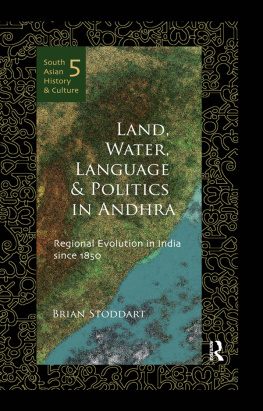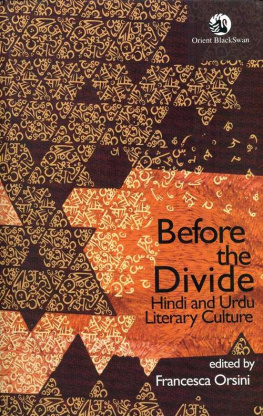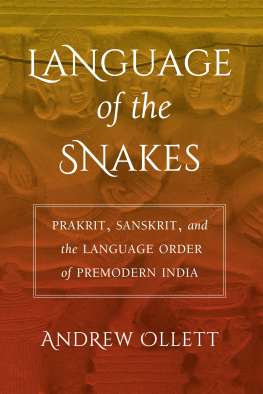Regional Language Television in India
This book examines the evolution and journey of regional language television channels in India. The first of its kind, it looks at the coverage, uniqueness, ownership, and audiences of regional channels in 14 different languages across India, covering Hindi, Bengali, Marathi, Telugu, Tamil, Urdu, Assamese, Bhojpuri, Gujarati, Kannada, Kashmiri, Odia, Punjabi, and Malayalam. It brings together researchers, scholars, media professionals, and communication teachers to document and reflect on language as the site of culture, politics, market, and social representation.
The volume discusses multiple media histories and their interlinkages from a subcontinental perspective by exploring the trajectories of regional language television through geographical boundaries, state, language, identities, and culture. It offers comparative analyses across regional language television channels and presents interpretive insights on television culture and commerce, contemporary challenges, mass media technology, and future relevance.
Rich in empirical data, this book will be an essential read for scholars and researchers of media studies, television studies, communication studies, sociology, political studies, language studies, regional studies, and South Asian studies. It will also be useful to professionals and industry bodies in television media and is broadcasting, journalists, and television channels.
Mira K. Desai teaches at the University Department of Extension and Communication, SNDT Womens University, Mumbai, India. Her area of work is in print and television production (as reporter, researcher, scriptwriter, and anchor), newsletter editing, and documentary filmmaking, and is a media educator for over three decades.
Regional Language Television in India
Profiles and Perspectives
Edited by
Mira K. Desai
First published 2022
by Routledge
2 Park Square, Milton Park, Abingdon, Oxon OX14 4RN
and by Routledge
605 Third Avenue, New York, NY 10158
Routledge is an imprint of the Taylor & Francis Group, an informa business
2022 selection and editorial matter, Mira K. Desai; individual chapters, the contributors
The right of Mira K. Desai to be identified as the author of the editorial material, and of the authors for their individual chapters, has been asserted in accordance with sections 77 and 78 of the Copyright, Designs and Patents Act 1988.
All rights reserved. No part of this book may be reprinted or reproduced or utilised in any form or by any electronic, mechanical, or other means, now known or hereafter invented, including photocopying and recording, or in any information storage or retrieval system, without permission in writing from the publishers.
Trademark notice: Product or corporate names may be trademarks or registered trademarks, and are used only for identification and explanation without intent to infringe.
British Library Cataloguing-in-Publication Data
A catalogue record for this book is available from the British Library
Library of Congress Cataloging-in-Publication Data
A catalog record has been requested for this book
ISBN: 978-0-367-21077-9 (hbk)
ISBN: 978-1-032-05794-1 (pbk)
ISBN: 978-0-429-27042-0 (ebk)
DOI: 10.4324/9780429270420
Typeset in Sabon Lt Std
by SPi Technologies India Pvt Ltd (Straive)
Dr Binod C. Agrawal
For instilling anthropology in a commerce graduate
Tables
- 0.1 Most spoken languages in India
- 0.2 State-wise language and other language speakers across India
- 0.3 Sun Network of channels
- 0.4 Zee Network of channels
- 0.5 Eenadu Network (started in 1995)
- 0.6 Network 18 channels
- 0.7 Doordarshan regional network, 20 channels
- 0.8 Only news networks
- 0.9 Inception of private language channels
- 0.10 Inception of OTT channels and Indian languages
- 0.11 TRAI data on broadcasting and cable (C&S) services as on January 2020
- 0.12 Regional language channels according to the Ministry of Information and Broadcasting as on March 2019
- 1.1 Regional language viewership 2019 and 2020
- 1.2 Top five weekly impressions of Hindi channels
- 9.1 Development of government television in Gujarat
- 12.1 Trajectory of some private television channels in Odisha
- 12.2 Viewership and time spent on a particular channel by the Odia viewer in 2014
- 13.1 Punjabi television channels and their audiences
Abbreviations
ARPUAverage revenue per unitBARCBroadcast Audience Research Council IndiaC&SCable and satelliteCRSCommunity radio stationDASDigital addressable systemDECUDevelopment and Education Communication UnitDTHDirect to homeFTAFree to airGECGeneral entertainment channelHPTHigh-power transmitterHSMHindi-speaking marketHSPHindi-speaking publicISDInternational subscriber diallingISPsInternet service providersLPTsLow-power transmittersM&EMedia and entertainmentMSOMulti system operatorOTTOver the topRLSCRegional languages satellite channelRNURegional news unitSIETState Institute of Education TechnologySITESatellite Instructional Television ExperimentSTBSet top boxTAMTelevision audience measurementTRAITelecom Regulatory Authority of IndiaTRPTelevision rating pointVODVideo on demand
Contributors
Kazimuddin Ahmed is a doctoral researcher at the University of Helsinki, Finland, and works on participatory communication. In his doctoral research he uses participatory videos to explore perceptions of identity, conflict, and peace in Assam. He has previously worked with International Union for Conservation of Nature (IUCN), Panos South Asia, Kathmandu, Nepal, and Centre for Science and Environment, New Delhi, India. As a photographer and documentary filmmaker, he is interested in documenting narratives of conflict, border problems, and the environment.
Debanjan Banerjee is Head of Department at NSHM College of Management and Technology, Kolkata, and Head Examiner, Media Science, Maulana Abul Kalam Azad University of Technology, Kolkata, India. He has more than 22 years of industry and teaching experience. He has been the editor of a business fortnightly and is a regular feature writer for newspapers, magazines, and portals. He has authored two books on media and management, namely, Media Speaks Management Matters and Justice and Journalist.
Ujjwala Barve is Professor at the Department of Communication and Journalism, Savitribai Phule Pune University, Pune, India. After working in print, radio, and TV journalism, she shifted to academics. She continues to contribute to AIR and Doordarshan as an anchor of current affairs programmes and is an award-winning TV anchor. Her academic and research interests are media and language, radio broadcasting, media research, and such.
A. Chandrasekhar is Assistant Professor at IIMC, Southern Campus, Kottayam, Kerala, India. A journalist turned academic and a film critic, he has double postgraduate degrees in English and Mass Communication. With 29 years of experience, he has worked with organizations like Malayala Manorama, Webdunia.com, Amrita TV, Rashtra Deepika, and Indiavision Kanyaka fortnightly. He has written 20 books on films and is a member of the Kerala Film Critics Association. He has received the Kerala State Award for best film book thrice, state awards for television criticism twice, and has also won the Kerala State Chalachitra Academy Research Fellowship in 2018.








